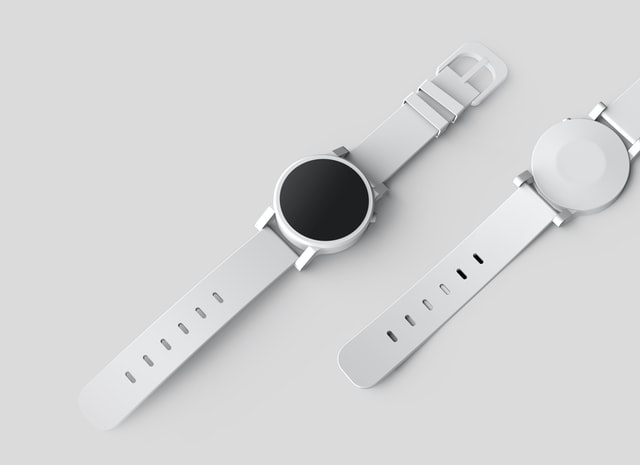Wristwatches are quite useful devices. They give the time, but some also play music and movies and monitor your heart rate and sleep habits. Smartwatches, the newest development of the clock that has been around for ages, include such qualities. The basic wristwatch is becoming increasingly sophisticated.
Despite these advancements, one of the wristwatch’s most underappreciated yet important functions is also one of its most basic. If it’s set correctly and is analog, a watch may be a phenomenally accurate compass (sorry, digital watch fans). Sure, some looks include compasses, but you don’t need to spend more on them if you know how to use them.
What is the difference between an analog and a digital watch?
Until the early 1970s, almost all wristwatches were analog. In other words, all timepieces employed a mix of an hour and minute hands to tell the time. The first digital watch was debuted in 1972 and cost thousands of dollars, but within a decade, they had become extremely popular and incredibly inexpensive.
This was partly due to the quartz revolution, which nearly drove Switzerland’s mechanical watch industry to its knees.
Because the introduction of quartz (battery-powered) watches and digital watches coincided closely, many people mistakenly believe that all quartz watches are digital.
Many analog timepieces, on the other hand, are battery-operated. Here’s why quartz watches are typically thought to be more accurate than mechanical watches.
Now that we know the difference, let’s look at utilizing practically any analog watch as a compass.
We’re at it again, drawing a divide. True, the following method is only effective if you are in the Northern Hemisphere. The technique can be adjusted for the Southern Hemisphere, which we’ll go through shortly.
Using your watch as a compass depends on the sun’s natural force. While a standard compass is managed by magnetic fields that move the needle towards the north, using your watch as a compass relies on the sun’s natural force.
If you’re lost and don’t have access to a compass, all you need is your trusty analog watch and the ability to see the sun (try not to look right at it).
Let’s go over everything you need to accomplish in detail.
Step 1: Take off your watch and place it horizontally on your wrist.
Step 2: On the face, locate the hour hand and point it toward the sun.
Step 3: Locate the precise center of the hour hand and the 12 markers on the watch, indicating a southerly direction.
There you have it: three simple methods to determining the south. You’re good to go as long as you remember that north is the polar opposite of south (and if you can’t figure out east and west from there, you should probably remain indoors forever).
Of fact, as simple as it sounds, it is dependent on a few key details. To begin with, spotting the sun on a foggy day may be challenging. There’s not much you can do about that but search for an object’s shadow if there’s even a sliver of sunshine. The sun’s shadow will be cast in the opposite direction (assuming no other light source). You’ll also have to wait till sunrise because this method doesn’t work at night.
Now, it may appear that establishing the precise midpoint between the hour hand and the 12 marker is simple, but depending on the watch, it may be more difficult. If your hour hand is pointed at 5, for example, the midpoint is midway between 2 and 3. However, not all timepieces contain markings for each hour.
A watch with a dial, such as the Bulova Sea King Analog watch, is something we suggest.
As you can see below, the watch contains a marker for each hour and each minute. This will make pinpointing a precise path a lot simpler.
Make a Compass Out of a Watch (Southern Hemisphere)
That’s all well and good, but if you’re in Australia or anywhere in the Southern Hemisphere, you’ll need to tweak your strategy.
The steps aren’t that dissimilar, but they do necessitate some adjustments.
Step 1: Take off your watch and place it horizontally on your wrist.
Step 2: Face the sun with the 12 markers on your watch face.
Step 3: Locate the precise center of the hour hand and the watch’s 12 markings. That indicates a northerly direction.
That is all there is to it. There are no frills or additional features. It’s just a basic approach for getting back home if you get lost in the (sunny) woods.
This method, of course, only works if your watch is accurate. You’ll find yourself walking in the wrong direction if you wear one of those watches that constantly loses time. As a result, you should generally choose a quartz watch over a mechanical watch (you can read why quartz is more accurate here).
We recommend the Longines Conquest V.H.P. (“very high precision”), an apt moniker for one of the most precise quartz watches available.
What Is A Compass, and How Do I Use It?
Some people become lost in the woods even with a compass because they don’t understand how to utilise the compass features to establish their bearing and stay true north on the map rather than magnetic north. Here’s a 7-minute video that demonstrates how to use a compass efficiently.

